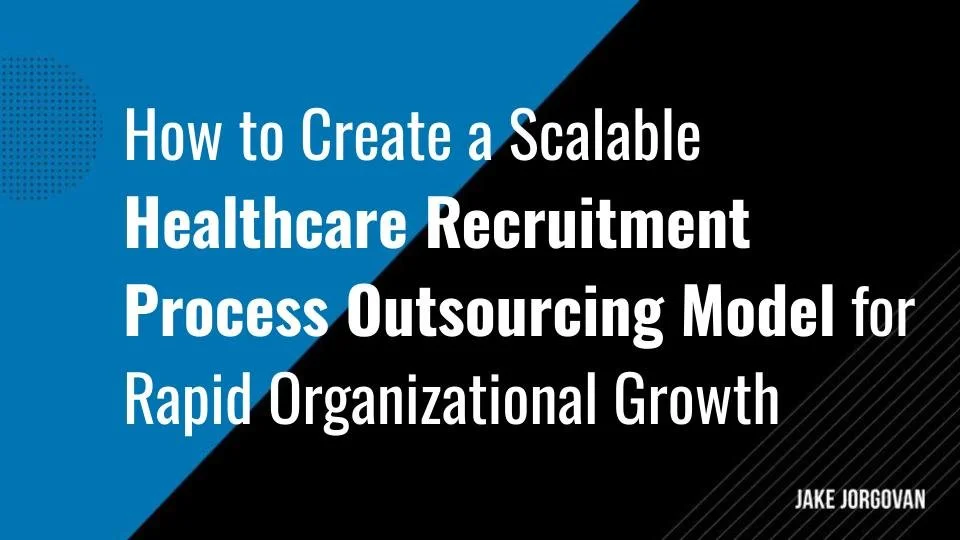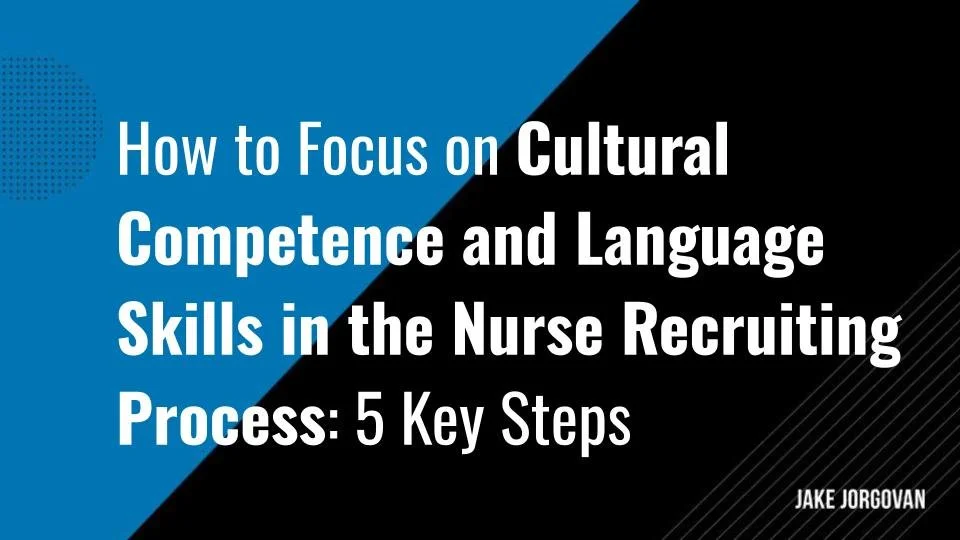5 Trends Defining the Physician Recruiting Market in 2024
Physician recruiting is evolving rapidly in 2024.
Market demands, technology, and shifting healthcare needs are driving major changes.
Understanding these trends is essential for staying competitive in a challenging landscape.
In this article, we’ll break down the five key trends defining the physician recruiting market.
These insights will help you adapt to the evolving dynamics and refine your recruitment strategy.
Let’s dive into the trends reshaping physician recruiting today.
5 Trends in Physician Recruiting and How to Align with Them
1) Increased Demand for Specialized Physicians
The growing need for specialized physicians creates unique recruitment opportunities, but only for those who understand how to navigate this landscape. To remain competitive, you need a strategy tailored to this demand's specific challenges and nuances. General approaches won’t suffice in a market that increasingly favors niche expertise over broad qualifications. Here’s how to capitalize on this trend:
Identify high-demand specialties early: Track healthcare trends, hospital expansions, and regulatory changes to determine which specialties will see higher demand. Use data from industry reports and client feedback to inform your decisions and focus your efforts on the right areas.
Target niche platforms for outreach: Engage with specialized online communities, forums, and medical associations that cater to the expertise you're recruiting. Don’t rely solely on general job boards; physicians in high-demand specialties often look for opportunities in places more tailored to their needs.
Build strong partnerships with academic institutions: Establish long-term relationships with medical schools and residency programs that focus on specialized fields. This allows you to identify top talent early and position yourself as a trusted resource for both students and faculty.
Offer competitive and flexible packages: Tailor compensation, benefits, and work arrangements to meet the unique expectations of specialists. These professionals often value work-life balance and specific perks more than general physicians, so customize your offers accordingly.
Leverage data analytics to anticipate market shifts: Use predictive tools to forecast demand for certain specialties. This enables you to stay ahead of competitors by adjusting your recruitment strategy before others do.
Insider Tip:
Keep a close watch on mergers and acquisitions in the healthcare sector. They often signal a sudden rise in demand for certain specialties. When you see a major acquisition, consider reaching out to relevant specialists immediately. This move can place you ahead of the curve.
2) Rising Use of Telemedicine in Recruitment
Telemedicine is no longer just a convenience—it’s a necessity. Healthcare providers now expect flexibility in how they work, and telemedicine offers them that option. Your ability to leverage this shift will directly impact how successful you are in attracting top talent. Here’s how to effectively integrate telemedicine into your recruiting strategy:
Prioritize telemedicine experience in candidates: Actively seek physicians who have prior experience with telemedicine platforms. This shows they can adapt to remote healthcare delivery without the need for extensive training, positioning them as immediately valuable.
Highlight telemedicine opportunities in job postings: Make it clear in your recruitment materials that telemedicine is a significant part of the role. Physicians who are open to remote work will be more inclined to engage if they see that this option is prioritized.
Optimize your onboarding process for remote work: Develop a streamlined, efficient onboarding process that includes telemedicine training. Many healthcare providers are unfamiliar with specific platforms, so providing hands-on training can set you apart from other recruiters.
Offer flexibility in hybrid models: Allow physicians to choose a combination of in-person and telemedicine work. Flexibility appeals to a broad range of candidates, including those who may not want a fully remote position but appreciate the option for partial telehealth.
Stay updated on telemedicine regulations: Different states have different requirements for practicing telemedicine. Keep a close eye on these regulations and guide your candidates through the licensure process, especially if they are practicing across state lines.
Insider Tip:
We suggest monitoring state-by-state telemedicine legislation as it evolves. New bills often create opportunities in underserved areas. When you spot a shift, you should contact relevant candidates who want to expand their practice across state lines before the competition does.
3) Emphasis on Physician Work-Life Balance
Physicians are increasingly seeking roles that prioritize work-life balance. This makes it a critical factor in your recruitment strategy. The pressure of long hours and high-stress environments has led to a shift in what top candidates value most. You need to understand how to present roles that offer a more sustainable lifestyle if you want to stand out. Here’s how you can adjust your approach:
Promote flexible scheduling options: Physicians want more control over their schedules. Offering part-time, rotating shifts, or even job-sharing opportunities can make your roles more attractive to candidates who prioritize flexibility.
Emphasize mental health support: Burnout is a major concern for many physicians. Highlight any wellness programs, mental health resources, or employee assistance programs your clients offer to show that you're serious about supporting a balanced life.
Offer creative compensation packages: Salary alone isn’t enough. Consider structuring compensation to include time-off incentives, wellness stipends, or flexible vacation policies that prioritize personal well-being.
Showcase client culture: Physicians are looking for environments that support them both personally and professionally. Highlight aspects of your clients' workplace cultures that encourage collaboration, mentorship, and downtime. This can include everything from on-site childcare to team-building activities.
Tailor roles to personal preferences: Understand the personal priorities of each candidate—whether it’s location, schedule, or specific clinical duties—and match them to roles accordingly. Personalization in your recruitment process will stand out in a crowded market.
Insider Tip:
We recommend asking candidates during interviews about their ideal work-life balance before discussing any roles. This allows you to pre-select positions that fit their preferences, increase your placement success rate, and build stronger relationships with physicians.
4) Growing Competition for Rural Placements
Rural physician recruitment has become increasingly competitive. Many healthcare providers struggle to attract talent to less-populated areas, but this challenge presents an opportunity for those willing to approach it strategically. Physicians are often hesitant about rural placements, but your ability to overcome these concerns can set you apart. Here’s how you can tackle the rural recruiting landscape effectively:
Offer compelling relocation packages: Physicians relocating to rural areas often need significant incentives to make the move. This could include housing assistance, moving expense coverage, or even school tuition for their children. Make sure your relocation packages address the personal needs of the candidates.
Highlight lifestyle benefits unique to rural areas: Physicians may not immediately realize the lifestyle advantages that rural settings offer. Promote aspects like lower cost of living, outdoor recreational opportunities, and a slower pace of life to appeal to those seeking a change from urban environments.
Emphasize professional autonomy and impact: Rural physicians often enjoy more independence in their roles, as well as the ability to make a tangible impact on their communities. Stress how practicing in a rural area can allow for broader clinical experience and leadership opportunities.
Build community connections: Introduce candidates to local leaders and future colleagues early in the process. Help them feel a sense of belonging before they even accept an offer, which can make the transition smoother and increase the likelihood of acceptance.
Offer loan repayment incentives: Many states offer loan repayment programs for physicians who serve in rural areas. Incorporate this into your recruitment pitch, especially for younger doctors burdened by medical school debt.
Insider Tip:
Connecting candidates with rural physicians currently in practice is highly effective. These peer-to-peer conversations provide a realistic view of rural life and often dispel misconceptions. This improves the candidate's openness to accepting the role.
5) Integration of AI and Data Analytics in Recruitment Strategies
Artificial intelligence and data analytics are now integral to physician recruiting. These tools allow you to make faster, more informed decisions and personalize the recruitment process at scale. You need to integrate these technologies into your strategy if you want to stay ahead of the competition. Here’s how to fully leverage AI and data analytics in your recruiting efforts:
Use predictive analytics for targeted outreach: Identify trends in candidate preferences and market demands to refine your search. This allows you to predict which candidates are more likely to engage with specific job offers, saving time and resources.
Automate the screening process: Implement AI-driven tools that can sift through resumes, flagging top candidates based on predefined criteria. This accelerates your ability to identify qualified physicians and shortens the time to hire, making you more competitive.
Personalize communication with candidates: AI tools can analyze past interactions to determine the best messaging and timing for reaching out to candidates. Use this to build more meaningful relationships, showing candidates that you understand their unique needs and preferences.
Leverage data to improve placement outcomes: Track key performance metrics on placements, such as time-to-fill, candidate satisfaction, and retention rates. Use this data to adjust your approach, ensuring better alignment between candidates and opportunities in the future.
Identify under-tapped talent pools: AI-driven insights can reveal patterns in recruitment data, helping you discover untapped talent pools or underserved specialties. This allows you to expand your reach and diversify the physicians you bring on board.
Insider Tip:
We suggest actively using AI to analyze which candidates are at risk of declining offers. Once you spot potential red flags, you can intervene with tailored counteroffers or adjustments before it’s too late. This minor adjustment can significantly reduce drop-offs during the final stages of recruitment.
Stay On Top of Physician Recruiting Trends
Adapting to physician recruiting trends is essential for success.
Your recruitment strategy must evolve fast enough to meet new demands as competition intensifies.
The future of healthcare depends on the ability to attract and retain top talent.
Now is the time to rethink your approach and stay ahead in the ever-changing physician recruiting market.































